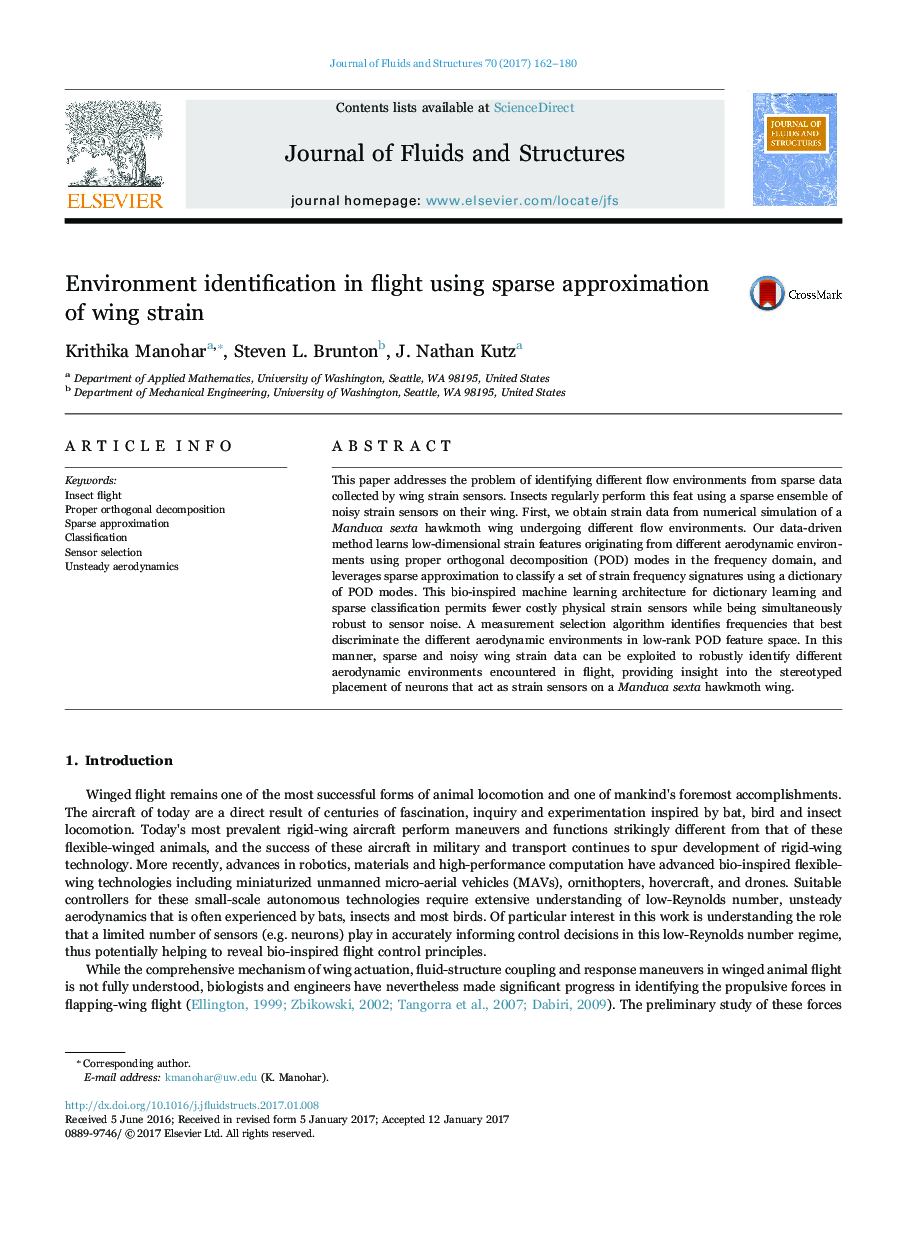| Article ID | Journal | Published Year | Pages | File Type |
|---|---|---|---|---|
| 5017423 | Journal of Fluids and Structures | 2017 | 19 Pages |
Abstract
This paper addresses the problem of identifying different flow environments from sparse data collected by wing strain sensors. Insects regularly perform this feat using a sparse ensemble of noisy strain sensors on their wing. First, we obtain strain data from numerical simulation of a Manduca sexta hawkmoth wing undergoing different flow environments. Our data-driven method learns low-dimensional strain features originating from different aerodynamic environments using proper orthogonal decomposition (POD) modes in the frequency domain, and leverages sparse approximation to classify a set of strain frequency signatures using a dictionary of POD modes. This bio-inspired machine learning architecture for dictionary learning and sparse classification permits fewer costly physical strain sensors while being simultaneously robust to sensor noise. A measurement selection algorithm identifies frequencies that best discriminate the different aerodynamic environments in low-rank POD feature space. In this manner, sparse and noisy wing strain data can be exploited to robustly identify different aerodynamic environments encountered in flight, providing insight into the stereotyped placement of neurons that act as strain sensors on a Manduca sexta hawkmoth wing.
Keywords
Related Topics
Physical Sciences and Engineering
Engineering
Mechanical Engineering
Authors
Krithika Manohar, Steven L. Brunton, J. Nathan Kutz,
